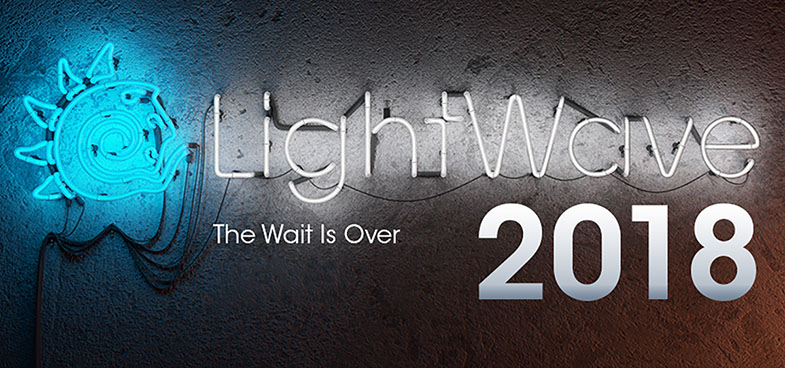
- Search
-
Login
-
0
ComparisonAdd products to compare, then they will appear here and you can compare parameters.
-
0
0 €Nothing in the basket.
NewTek releases LightWave 3D 2018!
NewTek, Inc., released LightWave 2018, the new iteration of their comprehensive 3D animation system. The software for Windows and Mac operating systems is available as of January 1, 2018. LightWave 2018 introduces new features that are ideal for physically based rendering, VR rendering, and more. It also extends the functionality of popular features like the buffer system, FiberFX, cel-shading, object deformations, and others.
LightWave 2018 highlights include:
Physically Based Rendering System: Completely rewritten rendering, shading and lighting architecture for greater realism, accuracy and ease-of-use
Render and Light Buffers: Expanded workflow for render and light buffers that simplifies compositing and offers more flexibility, including real-time preview of new buffers in any viewport using VPR, as well as custom buffers using the node editor
Volumetric Engine and Open VDB Support: Using the new volumetric render primitives, artists can specify physically based properties, Scattering, Absorption and Emission parameters, along with powerful node networks
Light Capabilities: New lighting architecture brings physical lights that can be optionally visible to the camera, and improved loading of IES web files to better match the intensity of real manufactured lights
Surface Editor, Material Nodes and Surface Preview: The Surface Editor has been overhauled for the new shading system with powerful node-based materials that are presented with a familiar interface
Virtual Reality Camera: Includes both cylindrical and spherical modes for creating stereo 360-degree renders and animations for VR applications
Modifier Stack with New Deformation Nodes: Unlocks and simplifies the previously fixed order of operations for Bones, Morphs, Subdivision and Displacements with the ability to drag and drop to re-order mesh deformations interactively
Cel Shader and Enhanced Edge Rendering: Offers flexible non photoreal render control over material shading and allows gradient-based cel shading, while Edge Rendering uses any material available in the Surface Editor to shade any line
More Integrated FiberFX: Expanded to integrated closely with the new lighting and shading system and can use any material on the fibers. Fibers are now generated using the new primitive object architecture
Layout-based Parametric Shapes: Parametric shapes allow for creation of virtual primitive shapes in Layout that can be displaced, surfaced and rendered without needing any geometry
Noise Reduction Filter: Speeds up render times by using less Global Illumination rays and samples, while allowing for clean up of the resulting noise using filters instead of increased render settings
New Modeler Features: Layout View viewport shows the current camera view from Layout. Also new are fully interactive tools including Lattice, Smoothing, Array and Spline Bridge
Additionally, LightWave 2018 includes new enhancements to the Viewport Preview Renderer (VPR) and introduces many additional new features and improvements such UDIM texture support, more supported presets, FiberFX, Unity 5 support, and more.

